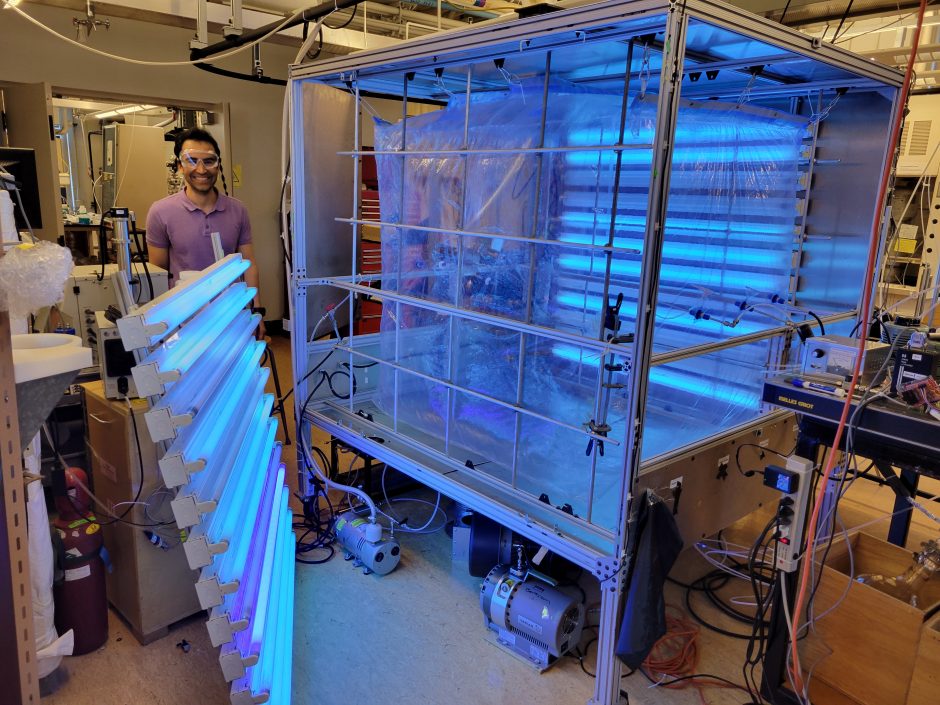Secondary organic aerosol (SOA) are one of the main classes of aerosols in the atmosphere. These particles are formed in the atmosphere when volatile organic compounds, such as terpenoids from trees and aromatic hydrocarbons from fossil fuels, are oxidized to form molecules with lower volatility, which condense to form aerosols. The term “secondary” indicates they are formed in the atmosphere. We are measuring the physical and chemical properties of these aerosols to better understand their role in climate, air quality, and health. Techniques and instrumentation include an environmental chamber, optical microscopy, fluorescence microscopy, X-ray diffraction, the poke-flow technique, fluorescence recovery after photobleaching, and mass spectrometry.

Assembling an environmental chamber to study the properties of secondary organic aerosol.
(April 2023)
- F, Mahrt, et al., Atmospheric Chemistry and Physics, 2022, 22, 13783-13769.
- V.J. Baboomian, et al., Proceedings of the National Academy of Sciences, 2022, 119, e2208121119.
- Y. Huang, et al., Proceedings of the National Academy of Sciences, 2021, 118, e2101287118.
- E. Evoy, et al., Atmospheric Chemistry and Physics, 2019, 19, 10073-10085.
- L. Renbaum-Wolff, et al., Proceedings of the National Academy of Sciences, 2013, 110, 8014-8019.
